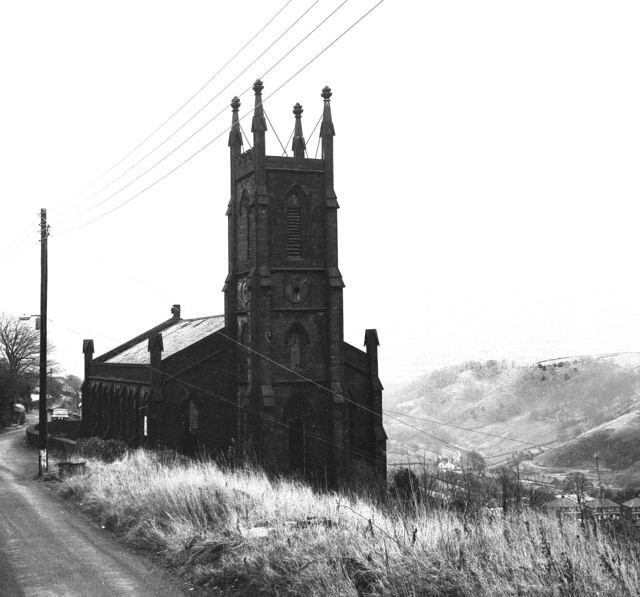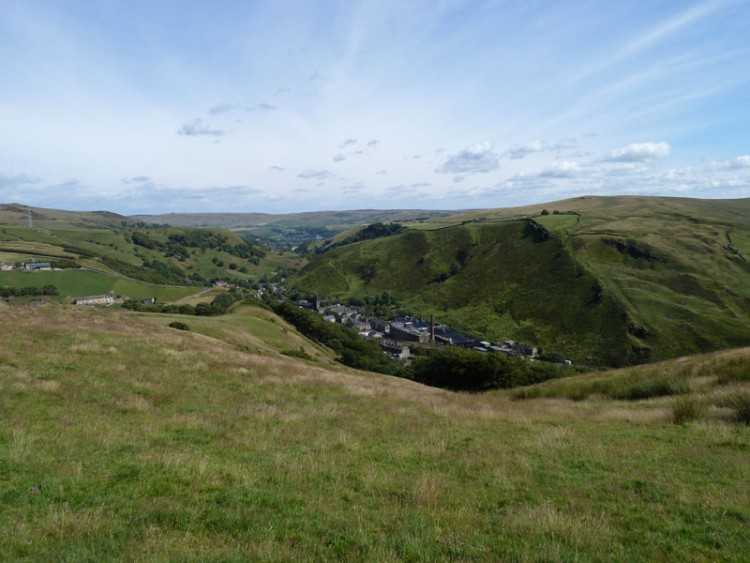
Posted on Mar 09, 2015 at 13:25 PM by andy.geall79
Boggart Lane makes up part of National Cycle Network Route 68 that travels from Scammonden to Long Causeway above Blackshaw Head. This climb sits in the steep or super steep category with an average gradient of 10.6% and a maximum of 15.6% the legs are working hard to clear this climb in one. The road narrows in parts and has a number of blind bends however traffic use is relatively low. This climbs is a tough challenge that provides a great link from Sowerby Bridge Town to Norland and the roads beyond. Climb status very hard (Double Black) and (Cat 4).
Very Hard – Double Black
A Very Hard – Double Black climb will feature super technical difficulty and really challenge amateur and profession cyclists alike. Climbs of this nature are likely to have an average gradient over 10% and sections over 15% gradient make these climbs seriously tough. Calderdale has a number of road and mountain bike climbs that sit in this category.
Read More
Posted on Mar 09, 2015 at 11:24 AM by andy.geall79
This is a short but tough climb that starts in Lancashire and works its way up to the Calderdale boundary. The first thing you tend to notice about this climb is the sheer drop to the left and the narrowness of the road. The surface even on dry days is often wet from running water off the hillside and loose stones washed down by the water are not uncommon. This climb is 0.7 miles long with an average gradient of 8.6% and a maximum of 14.1%. Climb status very hard (Black) and (Cat 4).
Very Hard – Black
Very Hard climbs will always feature a very steep gradient between 10 and 15% or feature technical terrain that requires a high level of skill to negotiate. This type of climb is a real challenge for anyone and a number of elements come into play on this type of climb. Having a bike that suits you with a good range of gears, health and general cycling fitness are all important to successfully complete a very hard – black climb.
Read More
Posted on Mar 09, 2015 at 11:08 AM by andy.geall79
This is a fantastic bit of road for those who love rural cycling; if you have made it to this point by bike you will have probably conquered a few local climbs already. Covering 3.5 miles this climb passes the unique Packhorse Inn and Widdop Reservoir before turning into singletrack road and nothing but open moorland. The average gradient of this climb is only 2.8% although the 10.3% maximum gradient provides a challenge. Climb status hard (Red) and (Cat 4).
Hard – Red
Hard climbs will feature a constant level of difficulty or feature a technically difficult section. Climbs of this nature are likely to feature terrain with a gradient between 5 and 10%. This type of climb will really challenge new cyclists and require regular cyclists to increase their efforts to successfully complete this type of climb. The majority of the climbs in the Calderdale area are hard – Red.
Read More
Posted on Mar 09, 2015 at 10:55 AM by andy.geall79
This 2nd instalment of the Cross Stone climbs follows the same road as climb (40. Cross Stone Rd (Todmorden) for the first 0.4 miles before turning left onto Hey Head Lane. This climb is tougher than climb 40 covering 1.6 miles with an average gradient of 10.2% and a maximum gradient of 15.2%. The simple fact on this climb is there are no places to rest if you plan to complete it without stopping. Climb status very hard (Double Black) and (Cat 3).
Very Hard – Double Black
A Very Hard – Double Black climb will feature super technical difficulty and really challenge amateur and profession cyclists alike. Climbs of this nature are likely to have an average gradient over 10% and sections over 15% gradient make these climbs seriously this category.
Read More
Posted on Mar 09, 2015 at 10:23 AM by andy.geall79
This climb basically consists of a really steep start, just short of a mile of almost flat terrain to recover and a really steep finish. The climb covers 1.7 miles with an average gradient of 6.7% and a maximum of 15.4%. Points of interest at the summit include Great Rock and views across the valley of Stoodley Pike. This climb will test even the strongest road cyclists earning a climb status of very hard (Double Black) and (Cat 3).
Very Hard – Double Black
A Very Hard – Double Black climb will feature super technical difficulty and really challenge amateur and profession cyclists alike. Climbs of this nature are likely to have an average gradient over 10% and sections over 15% gradient make these climbs seriously tough. Calderdale has a number of road and mountain bike climbs that sit in this category.
Read More
Posted on Mar 09, 2015 at 10:00 AM by andy.geall79
This is another instalment of the climbs from Cornholme in the Upper Calder Valley, covering 0.9 miles with an average gradient of 7.8% and a maximum gradient of 13.4%. The climb follows singletrack road and is almost traffic free as the tarmac weaves up to Tower Causeway. For many cyclists this provides a link to Bacup Road or Hilly alternative route to Todmorden or Walsden. Climb status hard (Red) and (Cat 4).
Hard – Red
Hard climbs will feature a constant level of difficulty or feature a technically difficult section. Climbs of this nature are likely to feature terrain with a gradient between 5 and 10%. This type of climb will really challenge new cyclists and require regular cyclists to increase their efforts to successfully complete this type of climb. The majority of the climbs in the Calderdale area are hard – Red.
Read More
Posted on Mar 06, 2015 at 15:45 PM by andy.geall79
This climb provides a direct link from the A646 at Cornholme to Long Causeway (Climbs 36 and 37). Not only is this a great link its one of the toughest climbs in Calderdale with an average gradient of 10% and a leg burning maximum gradient of 18.9%. This climb covers 1.2 miles and has very few resting points as it is steep or really steep. Climb status very hard (Double Black) and (Cat 3).
Very Hard – Double Black
A Very Hard – Double Black climb will feature super technical difficulty and really challenge amateur and profession cyclists alike. Climbs of this nature are likely to have an average gradient over 10% and sections over 15% gradient make these climbs seriously tough. Calderdale has a number of road and mountain bike climbs that sit in this category.
Read More
Posted on Mar 06, 2015 at 15:35 PM by andy.geall79
Pudsey Rd & Shore New Rd (Cornholme)
This climb provides a direct link from the A646 at Cornholme to Long Causeway (Climbs 36 and 37). Not only is this a great link its one of the toughest climbs in Calderdale with an average gradient of 10% and a leg burning maximum gradient of 18.9%. This climb covers 1.2 miles and has very few resting points as it is steep or really steep. Climb status very hard (Double Black) and (Cat 3).
Climb Status
Very Hard – Double Black
A Very Hard – Double Black climb will feature super technical difficulty and really challenge amateur and profession cyclists alike. Climbs of this nature are likely to have an average gradient over 10% and sections over 15% gradient make these climbs seriously tough. Calderdale has a number of road and mountain bike climbs that sit in this category.
Read More
Posted on Mar 06, 2015 at 15:11 PM by andy.geall79
This is Long Causeway West a stretch of road from the village of Blackshaw Head covering 1.7 miles to the summit at Raw Pole. The weather on this climb can prove challenging and a head wind can make efforts difficult. The average gradient of the climb is only 2.9% with a maximum gradient of 5.9%. Climb status challenging (Blue) taking into consideration the weather conditions.
Challenging – Blue
Challenging climbs are likely to feature an average gradient between 3 and 5% and can feature some technical difficulty. These climbs are ideal for people who have a good level of fitness and want to improve their ability to climb and feel a sense of achievement.
Read More
Posted on Mar 06, 2015 at 14:40 PM by andy.geall79
This is Long Causeway East one of the best sections of road in the area for scenery and the pure enjoyment of road cycling, add some extreme weather to the situation and your view of this could soon change. In good weather and the wind in your favour this climb will feel more like a fast rolling link than a climb, with an average gradient of 2.8% and a maximum of 8.7% the steepest parts of the climb come at the beginning. This climb crosses the Pennine Bridleway and also passes a large wind farm. This climb covers 4.9 miles and earns a hard (Red) and (Cat 3) status.
Hard – Red
Hard climbs will feature a constant level of difficulty or feature a technically difficult section. Climbs of this nature are likely to feature terrain with a gradient between 5 and 10%.This type of climb will really challenge new cyclists and require regular cyclists to increase their efforts to successfully complete this type of climb.The majority of the climbs in the Calderdale area are hard – Red.
Read More